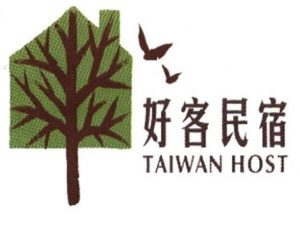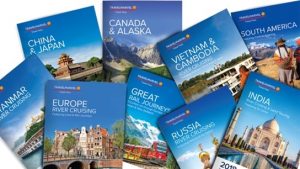Intellectual Property Rights (IPRs) heavily influence and enhance tourism and ancillary trade practices. Tourism is one of the most attractive avenues from the perspective of a country’s GDP and employment rate. IPRs are a very effective tool for creating an edge in the competitive tourism industry.
When it comes to the tourism industry, the concept of ‘destination branding’ has evolved, which is much more than the registration of a logo or a fancy tagline. It utilizes all different forms of Intellectual Property (IP) by epitomizing trademarks, copyright, geographical indications, industrial designs, trade secrets, and patents for the creation of the image of a brand, which helps one to look at tourism in holistic terms and not just in isolation.
Understanding Tourism
Why does one travel anyway? There could be multi-directional answers to this question. One reason could be that people like to experience things differently than what they come across every day. It means a different landscape, varied culture in the form of art, dance, and music extending to the literature of a particular region, peculiar architecture, and infrastructure, or probably the contrasting way of living life itself. Tourism is another name for experience, and all these experiences are subject-matters of one or the other forms of IPRs.
IPRs have gained momentum in this field because the notion of tourism in seclusion has lost relevance. People are lured further through newer approaches like eco-tourism, agro-tourism, health-tourism, religious tourism, etc. The United States uses the trademark ‘Red Hospitality and Leisure’ to promote eco-tourism. Agro-tourism is promoted in Australia for wine tasting and visiting in the Hilltops area through the promotional use of Hilltops GI. There are several other examples dealt with hereunder to emphasize the fact that IPRs have a crucial role in the propagation of tourism.
Trademarks and Tourism
Trademarks are distinctive marks, symbols, or words that help identify the source of the goods/services to differentiate them from the goods and services of others. Trademarks help in the image building of the entity and using it through continuous consumer recognition. Let’s consider some common examples that we usually come across.
- ‘St. Moritz,’ the small mountain village of Switzerland, was the first to register its name to enable wider recognition.

- The ‘I Love NY’ mark has gained recognition beyond the State of New York for its widespread use, spotted almost everywhere, including on the common pathways, cocktails of Manhattan, music, hip-hop, pizza, and cheesecake packaging.

- “Malaysia-Truly Asia” has been widely advertised over television and radio stations widely encompassing its culture, history and artifacts, geographic landscapes, and other experiences.
- “Tourism Australia” also uniquely embraces the logo for advertising by allowing third-parties to use the logo if it complies with certain established guidelines.
- The two logos, ‘Malaysia-Truly Asia’ and ‘Tourism Australia,’ utilize the concept of ‘umbrella branding’ effectively. Umbrella branding enables the unification of tourism through
 collaboration with third-parties, which utilize the mark to the benefit of the nation by contributing to its ability to be identified. Such marks can be used along with other marks exclusively belonging to an entity.
collaboration with third-parties, which utilize the mark to the benefit of the nation by contributing to its ability to be identified. Such marks can be used along with other marks exclusively belonging to an entity.
Other than the use of creative logos and catchy taglines, collective marks and certification marks are also utilized. Using such marks also counts as umbrella branding. It helps even smaller stakeholders in the industry to be recognized for fulfilling the prerequisites issued by such organizations facilitating it. Consider, for example, the ‘Green Globe’ mark used in India, which helps promote responsible and sustainable practices in pursuit of activities associated with travel and tourism. Another example could be the collective mark used as a tool for promoting sustainable development goals in the form of the ‘Sichuan Poverty Alleviation’ logo, which was registered by the Poverty Alleviation Association of Sichuan Province located in China. Taiwan also utilizes its certification mark for Bed and Breakfasts (B&Bs) for a comfortable lodging environment.
Another example could be the collective mark used as a tool for promoting sustainable development goals in the form of the ‘Sichuan Poverty Alleviation’ logo, which was registered by the Poverty Alleviation Association of Sichuan Province located in China. Taiwan also utilizes its certification mark for Bed and Breakfasts (B&Bs) for a comfortable lodging environment.


Geographical Indications and Tourism

Utilizing Geographical Indications (GIs) is always a well-resorted measure undertaken for the benefit of small competitive entities as well as indigenous communities. They help in the propagation and promotion of the much trending ‘agro-tourism’ by delivering a personal experience through encouraging tourist participation in the making of the GI products or through involvement in related festivities, etc. Tourism is curated along with the reputed GI marked goods having intrinsic qualities that are peculiar to the region being marked with. It helps the tourism sector through the acclaimed recognition a GI marked good/service receives. Therefore, many a time, it is because of the GI that a region gains popularity and affinity. Consider, for example, Boudreaux, which is famous for its wine. As a part of its tourism, people participate in wine tours, stay in a vineyard/winery, participate in sampling and wine festivities, take wine baths, etc. Other examples are Switzerland’s famous Gruyère cheese, Kolhapur for its Chappals (Sandals), and Kancheepuram for its silk sarees, both of which belong to India.

Copyright and Tourism
Tourists are also attracted by indigenous craftwork, art, heritage, literature, folk music, and other manifestations of culture. These are usually promoted through websites, pamphlets, advertisements on television sets, radio stations, and streaming applications accessed by mobile phones as well. All these categories of work utilize copyright.
An example of this is the copyright over Western Australia’s tourism-related webpages, documents, online images, graphics, audio, and videos, of which all rights are reserved by the Western Australian Tourism Commission.
Other IPRs and Tourism
Other forms of IP, like industrial designs, also aid and promote tourism by safeguarding rights over traditional handicrafts, products, and merchandise products that are peculiar to a specific region or locality.
The various advertising techniques and the method of conducting business can also be protected under the Law of Patents.

Challenges Faced while Utilizing Destination Branding
- The external environment can make the efforts of branding futile. Extreme weather conditions or terrorism and war struck countries would not excel in the tourism sector despite their efforts of branding.
- Lack of coordination and collaborative efforts between crucial elements like government authorities, local communities, and people, and other promoters can render the efforts in branding to go to waste. Therefore, mere branding is not sufficient if practically witnessed.
- Although tourism branding or destination branding is a crucial factor while promoting foot-fall in a particular region, locality, or area, it is not the only decisive factor. Consider, for example, where no concrete steps for the development of the destination are taken but over advertisement is promoted. It would defeat the very purpose of branding with the addition of cost, including registration of marks in several different countries, propagation through the use of different media, etc.
- The creation of a brand image requires strategic management. It is not a one-time task or ‘press the button, and it is done route to the promotion of tourism through branding or use of IPRs. It requires continuous coordination, long-term planning, and constant maintenance and development of the brand image.
Concluding Remarks
The tourism industry has evolved with time, and so has the means of conducting it. Tourism cannot operate in seclusion without touching other domains to fully utilize its commercial profits accruing to a nation’s economy. The IP regime, followed by a country, plays a crucial role in strengthening the competitiveness within the tourism industry while participating along with multi-national actors and states. Since competition has intensified, it is imperative to realize the role of intangible assets while adding value to goods and services peculiar to a nation/locality. IPRs should be utilized strategically to ensure poignant and effective advertising to ensure wider outreach by increasing consumer affinity extending beyond one’s geographical boundaries. ✅ For more visit: https://www.kashishipr.com/

No comments:
Post a Comment